|
|
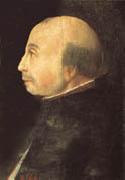 |
Bernardino india
|
|
Italian Emilian painter , 1528-1590
was a painter of the late Renaissance, born and mainly active in Verona. He is said to have trained with Domenico Riccio. He collaborated with Michele Sanmicheli in the Canossa palace and Pellegrini chapel in San Bernardino of Verona. He collaborated with Felipe Brusasorci, Domenico's son in frescoes at Palazzo Fiorio Della Seta. He decorated Palladian villas such as Villa Pojana, Villa Foscari (also known as La Malcontenta) where Giovanni Battista Zelotti also worked, and the Palazzo Thiene in Vicenza. Orlando Flacco completed his most extensive work for the Sala Maggior di Consiglio in Verona. |
|
|
|
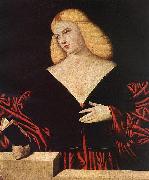 |
Bernardino Licinio
|
|
(c. 1489 - 1565) was an Italian High Renaissance painter of Venice and Lombardy. Born in Poscante (Bergamo). He mainly painted portraits and religious canvases.
|
|
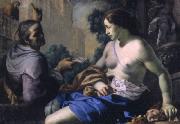 |
Bernardino Mei
|
|
(1612/15 - 1676) worked in a Baroque manner in his native Siena and in Rome, finding patronage above all in the Chigi family.
Briefly a pupil of the Sienese draughtsman and cartographer Giuliano Periccioli, where he learned the art of engraving, Bernardino passed to the studio of the painter Rutilio Manetti and probably also served in the workshop of Francesco Rustici.
He painted in and around Siena, where his work came to the attention of Cardinal Fabio Chigi, who, once elected pope as Alexander VII (1655), called Bernardino Mei to Rome in 1657. There Bernardino came under the influences of Mattia Preti, Andrea Sacchi and Pier Francesco Mola, and of Guercino, to the extent that until the 20th century Bernardino's fresco of Aurora in Palazzo Bianchi Bandinelli was attributed to Guercino himself. Through the fast friendship that bonded him to Gian Lorenzo Bernini, whose studio he frequented, he applied that sculptor's sense of theatrical action to his own mythological and allegorical subjects. He died in Rome in 1676.
|
|
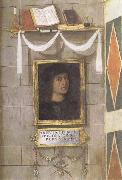 |
Bernardino Pinturicchio
|
|
c.1452-1513.Italian painter. He collaborated with Perugino in 1481-2 in the Sistine Chapel, Rome, and quickly established his reputation as a painter of distinctive and picturesque decorative cycles. His most important commissions included the decoration (1492-4) of the Borgia Apartments in the Vatican Palace, Rome, for Pope Alexander VI and the large fresco cycle (1502-1507/8) in the library of Siena Cathedral, depicting the Life of Aeneas Silvius Piccolomini |
|
|
|
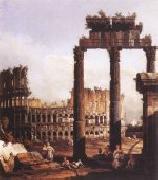 |
Bernardo Bellotto
|
|
Italian Rococo Era Painter, C.1721-1780
Italian painter and draughtsman. He was a view painter who worked in Italy and later at the courts of Dresden, Vienna, Munich and Warsaw. The nephew and almost certainly the pupil of Canaletto, outside Italy he signed his works de Canaletto and hence became known as Canaletto. He painted both topographical and imaginary views in a style independent of his uncle's, distinguished by cold colour and by the austere geometry of architectural masses. |
|
|
|
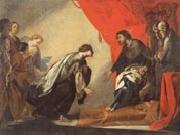 |
Bernardo Cavallino
|
|
Italian Baroque Era Painter, ca.1616-1656
was an Italian painter of the Baroque period, working in Naples. Born in Naples, he likely died during the plague epidemic in 1656. While his paintings are some of the more stunningly expressive works emerging from the Neapolitan artists of his day, little is known about the painter's background or training. Of eighty attributed paintings, less than ten are signed. He worked through private dealers and collectors whose records are no longer available. It is said that he trained with Massimo Stanzione, befriended the painter Andrea Vaccaro, and was influenced by Anthony Van Dyck, but his paintings could also be described as equidistant from Caravaggio and Bartolome Esteban Murillo in styles; tenebrism enveloped with a theatrical sweetness, a posed ecstasy and feeling characteristic of the high Roman baroque statuary. He is known to have worked in Neapolitan circles strongly influenced by Stanzione, which included Artemisia Gentileschi, Francesco Francanzano, Agostino Beltrano and Francesco Guarino. One of his masterpieces is the billowing maiden Virgin at the Brera Gallery in Milan. Passive amid the swirling, |
|
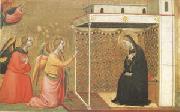 |
Bernardo Daddi
|
|
active in Florence 1320-1348
was an early Italian renaissance painter and apprentice of Giotto. He was also influenced by the Sienese art of Lorenzetti. Daddi's birth date remains unknown. He is first mentioned in 1312. He focused on religious motifs and altarpieces. A triptych he painted in 1328 is in the Uffizi, and there are several panels in National Gallery of Art and the Walters Art Gallery. Daddi became the leading painter of Florence during his generation. His last work dates from 1347, |
|
|
|
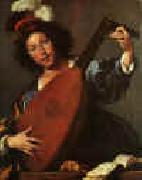 |
Bernardo Strozzi
|
|
1581-1644
Italian
Bernardo Strozzi Galleries
Strozzi was born in Genoa. He was probably not related to the other Strozzi family.
In 1598, at the age of 17, he joined a Capuchin monastery, a reform branch of the Franciscan order. When his father died c1608, he left the order to care for his mother, earning their living with his paintings, which were often influenced by Franciscan teachings, for example his Adoration of the Shepherds (c. 1615) . In 1625, he was charged with illegally practicing as a painter. When his mother died c1630, Bernardo was pressured in court by the Capuchin's to re-enter the order. He was briefly imprisoned in Genoa , and upon release fled to Venice to avoid confinement in a monastery in 1631. He became nicknamed all his life as il prete Genovese (the Genoa priest).
Saint Christopher, by Strozzi.Early paintings, such as The Ecstasy of St Francis show the dark emotionalism of Caravaggio. But by the second decade of the 17th century, while working in Venice, Strozzi had synthesized a personal style which fused painterly influences of the North (including Rubens and Veronese) with a monumental realistic starkness. For example, in the painting The Incredulity of Thomas, the background is muted, yet Jesus' face, haloed and his outline, misty, in a style atypical of Caravaggio. Never as dark as the Caravaggisti, Venice infused his painting with a gentler edge, a style more acceptable to the local patronage, and one derived from his precursors in Venice, Jan Lys (died 1629) and Domenico Fetti (died 1626), who had also fused the influence of Caravaggio into Venetian art. Examples of this style can be found in his Parable of the Wedding Guests (1630),Christ giving keys of Heaven to Saint Peter (1630),, Saint Lawrence distributing Alms at San Nicol?? da Tolentino[7] and a Personification of Fame (1635-6). He was also likely influenced by Velazquez (who visited Genoa in 1629-30).
After a commission to paint Claudio Monteverdi his fame grew, and his portrait paintings included many of the leading Venetians. His pupils and painter strongly influenced by him included Giovanni Andrea de Ferrari (1598-1669), Giovanni Bernardo Carbone, Valerio Castello and, Giovanni Benedetto Castiglione. |
|
|
|
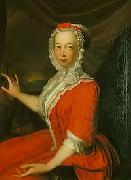 |
Bernardus Accama
|
|
(1697, Burum? - 1756, Leeuwarden) was an eighteenth century Dutch historical and portrait painter, born in Friesland. Active in Leeuwarden.
|
|
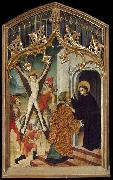 |
Bernat Martorell
|
|
was a Spanish painter, working in an Early Renaissance style. Little is known of his life prior to 1427, though by the mid 15th century he was one of the leading artists in Catalonia.
|
|
|
|
|
|
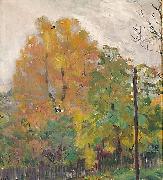 |
Bernhard Folkestad
|
|
1879 - 1933) was a Norwegian essayist and painter. He was born in London, where his father assisted at the Norwegian Seamen Mission. Among his painting teachers were Kristian Zahrtmann and Laurits Tuxen. His paintings Mørkeloftet from 1905, and Høns i høstsol and Grønnsaker from 1906 are all located in the National Gallery of Norway. Among his books are Svingdøren from 1926, Sol og morild from 1929, and Gullfisken from 1933. |
|
|
|
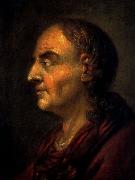 |
Bernhard Rode
|
|
Bernhard Rode (25 July 1725 - died 28 June 1797) was a Prussian artist and engraver well-known for portraying historical scenes and allegorical works. He knew most of the central figures in the Berlin Enlightenment as Friedrich Nicolai and Gotthold Lessing, and the philosophical and political discussions of the Berlin Philosophs informed much of the subject matter of his artistic work. His paintings include several works depicting, in various guises, the King of Prussia Frederick the Great, who ruled the Prussia during much of Rode's lifetime. Rode was director of the Berlin Academy of the Arts from 1783 until his death in 1797.
Rode was the son of a goldsmith Christian Bernhard Rode and his wife, Anna Sophie. The copper engraver Johann Heinrich Rode and the sculptor Philipp Rode were his brothers. He received his earliest artistic training from his father and his earliest training in drawing from a painter, N. Meller. His four-year education at the studio of the court painter Antoine Pesne, an influential painter in Berlin and Brandenburg, was important to his professional development. During his apprenticeship, he learned to paint portraits. In 1748, Rode began a study trip of several years. He spent 18 months in the studio of Jean Restout and Charles Andre van Loo (sometimes known as Carle van Loo or Vanloo). He became acquainted with Jean-Baptiste Deshayes and developed his talent and interest in the medium of history painting. In Venice and Rome, he studied the old masters. In 1755 or 1756, he returned to Berlin, and he married Sophie Luise, but the earliest years of their marriage remained childless. |
|
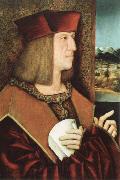 |
bernhard strigel
|
|
Bernhard Strigel (c. 1461 ?C 1528) was a German portrait and historical painter of the Swabian school, the most important of a family of artists established at Memmingen. He was born at Memmingen and was probably a pupil of Zeitblom at Ulm. He stood in high favor with the Emperor Maximilian I, in whose service he repeatedly journeyed to Augsburg, Innsbruck, and Vienna. |
|
|
|
|
|
|
|
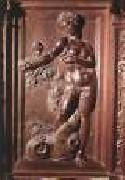 |
BERRUGUETE, Alonso
|
|
Spanish Mannerist Painter and Sculptor, ca.1488-1561
Alonso Berruguete was born in Paredes de Navas, Valladolid, the son of Pedro Berruguete, Spain's first major Early Renaissance painter. Pedro was trained in Italy, and it is understandable that he would want his son to have an Italian formation. Alonso was in Florence from about 1504, the year of his father's death, until about 1517. He also spent time in Rome during this period.
Berruguete's original purpose was to train as a painter, but he had the opportunity to study sculpture under Michelangelo, whom he is said to have assisted in the execution of some works. Berruguete received minor commissions, such as the completion of paintings and sculptures left unfinished by other artists.
On his return to Spain, Berruguete executed an alabaster relief, the Resurrection, for Valencia Cathedral (ca. 1517), which compares favorably with early works by Michelangelo. It is Hellenistic in its anatomical beauty, multiple diagonals, and range of relief projection. The figure of Christ is the climactic center of interest: a vertical, stabilizing force amid a tumult of diagonals described in the agitated movements of the startled Roman soldiers.
In 1518 Emperor Charles V named Berruguete court painter. When illness prevented Berruguete from sailing to Germany with Charles V in 1520, the Emperor took it personally and turned a deaf ear to Berruguete's subsequent petitions for commissions. He then returned to his native village until 1523, when Charles V named him a scribe of the criminal section of the Chancery in Valladolid.
This gave Berruguete social status, an income, and work he could deputize. Henceforth, he set himself to amass riches and advance socially. He established a studio in Valladolid, hired a number of apprentices, and priced his works above those of all other artists. It was a time of great wealth in Spain; Berruguete had seen sumptuous riches in Italy and was determined to so live that his compatriots would accord him the reverence and acclaim enjoyed by Italian artists.
In 1528 Berruguete built himself a palace in Valladolid, opposite the monastery of S. Benito, for which he created his greatest altarpiece. He succeeded so well in his ambitions that in 1542 he sold the Emperor's benefice for 4,000 ducats. Two years before he died, he became a squire when the regent of Portugal, Princess Juana, gave him the village of Ventosa with its 120 inhabitants. |
|
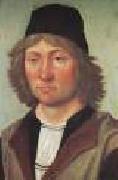 |
BERRUGUETE, Pedro
|
|
Spanish Early Renaissance Painter, ca.1450-1504
Pedro Berruguete (c. 1450 ?C 1504) was a Spanish painter, his art is regarded as a transitional style between gothic and renaissance. Born in Paredes de Nava, Spain, he went to Italy in 1480 and worked in Federigo da Montefeltro's court in Urbino. He came back Spain 1482 and painted in several cities as Sevilla, Toledo and Ávila. He was father of an important sculptor, Alonso Berruguete, considered the most important sculptor in Renaissance Spain. |
|
|
|
|
|
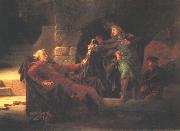 |
Bertalan Szekely
|
|
(May 8, 1835 - August 21, 1910) was a Hungarian Romantic painter of historical themes. "The Discovery of Louis II's Dead Body", "Women of Eger", "Battle of Mohe - s", "Ladislas V" are among the most important of his historical paintings. Szekely is also known for his many murals.
|
|
 |
Bertel Thorvaldsen
|
|
1770-1844 Copenhagen, He was a Danish/Icelandic sculptor. Thorvaldsen was born in Copenhagen in 1770 (according to some accounts, in 1768), the son of an Icelander who had settled in Denmark and there carried on the trade of a wood-carver. This account is disputed by some Icelanders, who claim Thorvaldsen was born in Iceland. Young Thorvaldsen attended Copenhagen's Royal Danish Academy of Art (Det Kongelige Danske Kunstakademi), winning all the prizes including the large Gold Medal. As a consequence, he was granted a Royal stipend, enabling him to complete his studies in Rome, where he arrived on 8 March 1797. Since the date of his birth had never been recorded, he celebrated this day as his "Roman birthday" for the rest of his life. Thorvaldsen's first success was the model for a statue of Jason, which was highly praised by Antonio Canova, the most popular sculptor in the city. In 1803 he received the commission to execute it in marble from Thomas Hope, a wealthy English art-patron. From that time Thorvaldsen's success was assured, and he did not leave Italy for sixteen years. In 1819 he visited his native Denmark. Here he was commissioned to make the colossal series of statues of Christ and the twelve Apostles for the rebuilding of Vor Frue Kirke (from 1922 known as the Copenhagen Cathedral) between 1817 and 1829, after its having been destroyed in the British bombardment of Copenhagen in 1807. |
|
|
|
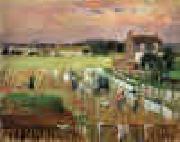 |
Berthe Morisot
|
|
French
1841-1895
Berthe Morisot Galleries
Berthe Morisot (January 14, 1841 ?C March 2, 1895) was a painter and a member of the circle of painters in Paris who became known as the Impressionists. Undervalued for over a century, possibly because she was a woman, she is now considered among the first league of Impressionist painters.
In 1864, she exhibited for the first time in the highly esteemed Salon de Paris. Sponsored by the government, and judged by academicians, the Salon was the official, annual exhibition of the Acad??mie des beaux-arts in Paris. Her work was selected for exhibition in six subsequent Salons until, in 1874, she joined the "rejected" Impressionists in the first of their own exhibitions, which included Paul C??zanne, Edgar Degas, Claude Monet, Morisot, Camille Pissarro, Pierre-Auguste Renoir, and Alfred Sisley. It was held at the studio of the photographer Nadar.
She became the sister-in-law of her friend and colleague, Édouard Manet, when she married his brother, Eugene.
|
|
 |
Bertram Mackennal
|
|
1863 - 1931,Mackennal was born in Fitzroy a suburb of Melbourne to parents who were both of Scottish descent. His father, John Simpson Mackennal, who was also a sculptor, provided his early training which was followed by studies at the school of design at the Melbourne National Gallery which he attended from 1878 to 1882. Marshall Wood, the English sculptor, who visited Australia in 1880, strongly advised him to go abroad. He left for London in 1882 to study at the National Gallery Schools, and for a time shared a studio with Charles Douglas Richardson and Tom Roberts. In 1884 he visited Paris for further study and married a fellow student, Agnes Spooner. On returning to England he obtained a position at the Coalport china factory as a designer and modeller. In 1886 he won a competition for the sculptured reliefs on the front of Parliament House, Melbourne, and returned to Australia in 1887 to carry these out. While in Australia he obtained other commissions, including the figure over the doorway of Mercantile Chambers, Collins Street, Melbourne. He also met Sarah Bernhardt, who was on a professional visit to Australia, and strongly advised the young man to return to Paris, which he did in 1891. In 1893 he had his first success, when his full length figure "Circe", now at the National Gallery of Victoria, obtained a "mention" at the Salon and created a good deal of interest. It was exhibited later at the Royal Academy where it also aroused great interest, partly because of the prudery of the hanging committee which insisted that the base should be covered. Commissions began to flow in, among them being the figures "Oceana" and "Grief' for the Union Club, Sydney. Two Melbourne commissions brought him to Australia again in 1901, the memorial to Sir William John Clarke at the Treasury Gardens, Melbourne, and the sculptures for the Springthorpe Memorial in Kew. He returned to London, and among his works of this period were the fine pediment for the local government board office at Westminster, a Boer War memorial for Islington, and statues of Queen Victoria for Ballarat, Lahore, and Blackburn. In 1907 his marble group "The Earth and the Elements" was purchased for the National Gallery of British Art under the Chantry Bequest, and in 1908 his "Diana Wounded" was also bought for the nation. This dual success brought Mackennal into great prominence, and he was elected an associate of the Royal Academy in 1909. In the following year he designed the Coronation Medal for King George V and also won the important commission for the obverse design (the monarch's head) of the new coinage needed for the new reign from 1911. This is certainly his most enduring design. His initials, B.M., can be seen on the truncation of the King's neck on the obverse of all British coins of George V. His next important piece of work was the memorial to Gainsborough at Sudbury, which was followed by the memorial tomb of King Edward VII at St. George's Chapel, Windsor. He also did statues of King Edward VII for London, Melbourne, Calcutta and Adelaide. He was the first Australian artist to be knighted.He was created a Knight Commander of the Victorian Order in 1921, and was elected R.A. in 1922. Among his later works were the nude male figure for the Eton War Memorial, the war memorial to the members of both houses of parliament in London, the figures of the soldier and the sailor for the cenotaph in Martin Place, Sydney, the bronze statue of King George V at Old Parliament House, Canberra, and the head of "Victory", presented to the Commonwealth by the artist, also at Canberra. He completed the Desert Mounted Corps memorial at the Suez Canal from the designs of Charles Web Gilbert a little while before his death. He died suddenly at his house, Watcombe Hall, near Torquay, |
|
 |
Bessie Wheeler
|
|
Bessie Wheeler was a painter about whom little is known, other than that she was born in 1876. She painted portraits of people encountered on the streets of Honolulu around 1900. She contributed illustrations to Thrum's Hawaiian Annual and was a member of the Kilohana Art League. |
|
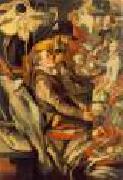 |
BEUCKELAER, Joachim
|
|
Flemish Northern Renaissance Painter, ca.1534-1574
A native of Antwerp, he studied under his uncle, Pieter Aertsen. Many of his paintings contain scenes of kitchen and markets, with religious allusions in the background. His Four Elements series (as of 2004[update], in the National Gallery, London) exemplifies this theme on a large scale. Water, for example, shows a fish market selling twelve kinds of fish, representing the twelve disciples of Jesus. Through an archway in the background we can see Jesus walking on the Sea of Galilee after his resurrection, making fish appear miraculously in empty nets. Beuckelaer's work was influential on painters in Northern Italy, particularly Vincenzo Campi. |
|
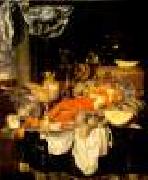 |
BEYEREN, Abraham van
|
|
Dutch Baroque Era Painter, ca.1620-1690
Dutch painter. He painted seascapes as well as fruit, flower, fish, game and banquet still-lifes. He almost always signed these works with his monogram AVB, but he dated only a few. This, together with the fact that he painted diverse subjects simultaneously and his style changed little, makes it difficult to establish a chronology. He became a master in The Hague in 1640 and was related by marriage to the fish painter Pieter de Putter (before 1600-59). Van Beyeren lived in Delft from 1657 to 1661 and was again in The Hague between 1663 and 1669. |
|
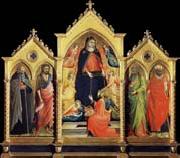 |
Bicci di Lorenzo
|
|
Italian, 1373-1452,was an Italian painter and sculptor, active in Florence. He was born in Florence in 1373, the son of the painter, Lorenzo di Bicci, whose workshop he joined. He married in 1418, and in 1424 was registered in the Guild of Painters at Florence. His son, Neri di Bicci was also a painter and took over the family workshop. Bicci di Lorenzo died in Florence in 1452 and was buried in Santa Maria del Carmine. Following early work - largely frescoes - in collaboration with his father, he received a number of important commissions, including, according to Vasari, from the Medici for a cycle of frescoes of Illustrious Men for the Palazzo Medici. For the Opera del Duomo, he painted frescoes of the apostles. And he painted a Saints Cosmas and Damian and frescoes representing the dedication of the church itself for Sant'Egidio in the hospital of Santa Maria Nuova. His best paintings are now thought to be the Madonna in Trono now in the National Gallery at Parma, the Three stories of St Nicholas triptych in the cathedral of Fiesole, and a Nativity in the church of San Giovannino dei Cavalieri in Florence. |
|
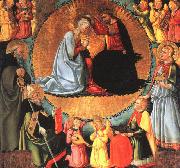 |
Bicci Di Neri
|
|
(1419-1491) was an Italian painter of the Renaissance. A prolific painter of mainly religious themes, he was active mainly in Florence and in the medium of tempera. His father was Bicci di Lorenzo. His grandfather, Lorenzo di Bicci was also a painter in Florence, a pupil of Spinello Aretino.
Neri di Bicci's main works include a St. John Gualbert Enthroned, with Ten Saints for the church of Santa Trinita, an Annunciation (1464) in the Florentine Academy, two altarpieces in the Diocesan Museum of San Miniato, a Madonna with Child Enthroned in the Pinacoteca Nazionale of Siena, and a Coronation of the Virgin (1472) in the abbey church at San Pietro a Ruoti (Bucine. He also painter numerous works in the area of Volterra.
His journals from the years 1453-1475, including the rates of remuneration for his work, are still preserved in the library of the Uffizi Gallery. They are known as Ricordanze.
|
|
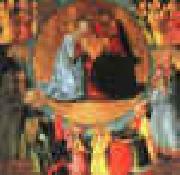 |
Bicci, Neri di
|
|
Italian Early Renaissance Painter, 1419-1491
was an Italian painter of the Renaissance. A prolific painter of mainly religious themes, he was active mainly in Florence and in the medium of tempera. His father was Bicci di Lorenzo (1373-1452). His grandfather, Lorenzo di Bicci (c. 1350-1427) was also a painter in Florence, a pupil of Spinello Aretino. He painted a St. Giovanni Gualberto enthroned, with ten Saints for the church of San Pancrazio. His journals from the years 1453-1475, |
|
|
|
|
|
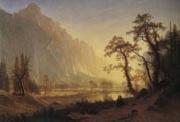 |
Bierstadt Albert
|
|
German-born American Hudson River School Painter, 1830-1902
was a German-American painter best known for his large landscapes of the American West. In obtaining the subject matter for these works, Bierstadt joined several journeys of the Westward Expansion. Though not the first artist to record these sites, Bierstadt was the foremost painter of these scenes for the remainder of the 19th century. Bierstadt was part of the Hudson River School, not an institution but rather an informal group of like-minded painters. The Hudson River School style involved carefully detailed paintings with romantic, almost glowing lighting, sometimes called luminism. Bierstadt was born in Solingen, Germany. His family moved to New Bedford, Massachusetts, in 1833. He studied painting with the members of the D??sseldorf School in D'sseldorf, Germany from 1853 to 1857. He taught drawing and painting briefly before devoting himself to painting. Bierstadt began making paintings in New England and upstate New York. In 1859, he traveled westward in the company of a Land Surveyor for the U.S. government, returning with sketches that would result in numerous finished paintings. In 1863 he returned west again, in the company of the author Fitz Hugh Ludlow, whose wife he would later marry. He continued to visit the American West throughout his career. Though his paintings sold for princely sums, Bierstadt was not held in particularly high esteem by critics of his day. |
|
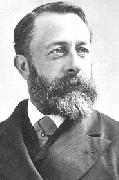 |
Bierstadt, Albert
|
|
The landscape painter
Bierstadt joined a surveying expedition to the western United States in 1858 after studying painting in Germany. |
|
|
|
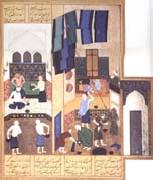 |
Bihzad
|
|
the period of 1465-153
Persian illustrator. The most famous master of Persian painting, he is important both for the paintings he executed and for the wider influence of the style associated with his name. Evidently orphaned at a young age, Bihzad is said to have been raised and trained by MIRAK, a painter and calligrapher employed in Herat by Husayn Bayqara. |
|
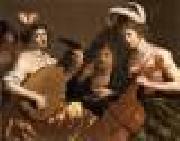 |
BIJLERT, Jan van
|
|
Dutch painter, Utrecht school (b. 1597/98, Utrecht, d. 1671, Utrecht)
Dutch painter. He was the son of the Utrecht glass painter Herman Beerntsz. van Bijlert (c. 1566-before 1615). Jan must have trained first with his father but was later apprenticed to the painter Abraham Bloemaert. After his initial training, he visited France and travelled to Italy, as did other artists from Utrecht. Jan stayed mainly in Rome, where he became a member of the Schildersbent; he returned to Utrecht in 1624. In Rome he and the other Utrecht artists had come under the influence of the work of Caravaggio; after their return home, this group of painters, who became known as the UTRECHT CARAVAGGISTI, adapted the style of Caravaggio to their own local idiom. The Caravaggesque style, evident in van Bijlert's early paintings. |
|
|
|
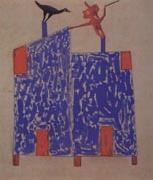 |
Bill Traylor
|
|
African-American Folk Artist, ca.1856-1949
was a self-taught artist born an Alabama slave. Unable to read or write, he first began drawing in 1939 at the age of eighty-three. He worked full-time for the next four years to produce over eighteen hundred drawings. He used a straight edge to create geometric silhouettes of human and animal figures which he then filled in with crayon and tempera. He is known for his intriguing use of pattern versus flat color and a remarkably intuitive sense of space. He started hanging his works on a nearby fence to entertain the locals. One of his first fans was Charles Shannon, a painter who introduced Traylor to the New South regionalist artists and organized two shows of his work before his death. Since then, Traylor has become one of the most highly sought-after outsider artists. |
|
|
|
 |
Bingham, George Caleb
|
|
American Realist Painter, 1811-1879. American painter. Raised in rural Franklin County, MO, Bingham experienced from an early age the scenes on the major western rivers, the Missouri and the Mississippi, that inspired his development as a major genre painter. During his apprenticeship to a cabinetmaker, he met the itinerant portrait painter Chester Harding, who turned Bingham's attention to art. Teaching himself to draw and compose from art instruction books and engravings, the only resources available in the frontier territories, Bingham began painting portraits as early as 1834. |
|
|

